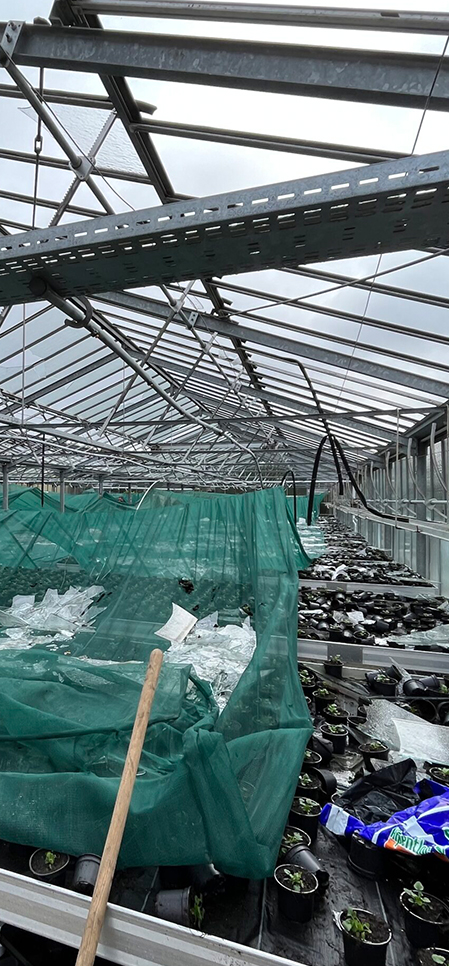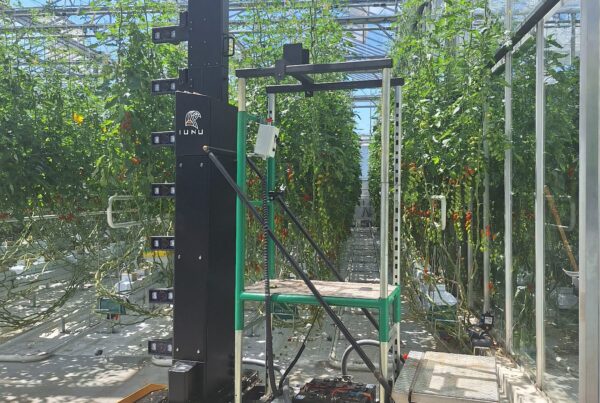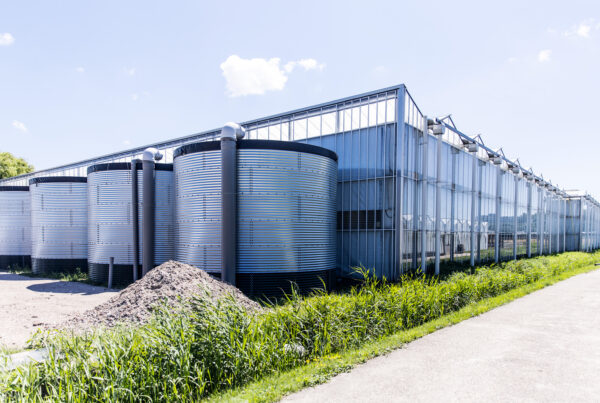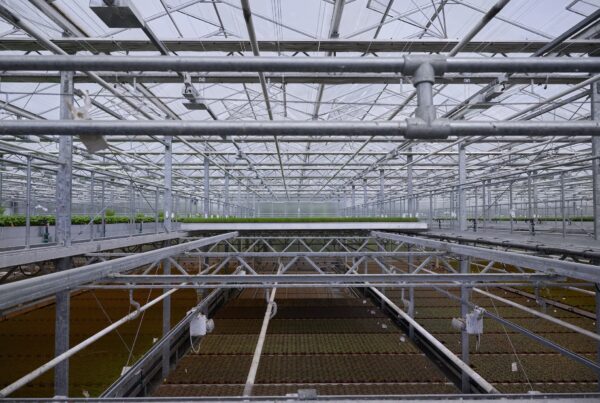In recent years, a hurricane has hit Germany every two years at the beginning of the year and caused considerable damage. Hurricane Zeynep in February 2022, Sabine in February 2020 and Friederike in January 2018. Storm events have also occurred more frequently in summer in recent years. These storms pose a significant threat to horticultural businesses, whether in greenhouses or outdoors. The following measures will help you to make your greenhouse or polytunnel storm-proof.
When storms rage: How to protect your greenhouse effectively
Individual storm protection solutions for greenhouse operators
Effective measures to reduce the risk of storm damage
The most important step to prevent storm damage in horticultural businesses is to identify and minimize the risks. With a thorough risk analysis and advice from our experts, you can effectively reduce the risk of storm damage.
Read on to find out how you can protect your business.
Preventive measures: Structure maintenance and stockpiling
To make a greenhouse as storm-proof as possible, it is important to ensure that the greenhouse structure is intact. Damaged components such as glass or frames and loose connections should be repaired or replaced. A hedge or row of trees can be planted on the windward side to provide additional protection. To prepare for possible roof damage, we recommend keeping glass panes in stock. The quantity should cover around 10 % of the total area of the greenhouse. We would be happy to help you find individual solutions for your greenhouse.
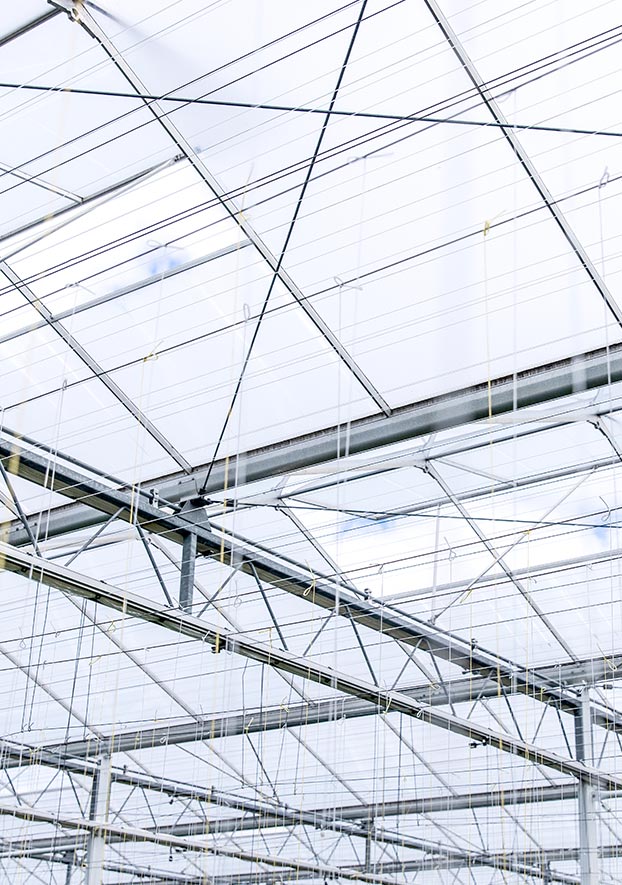
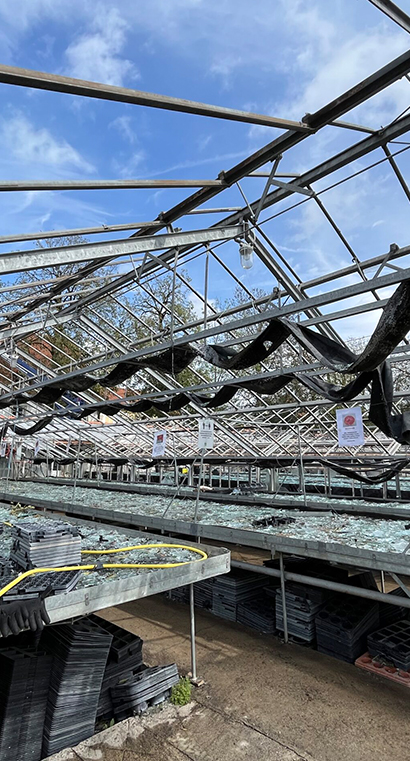
Short-term measures: Stabilization and risk minimization
When a storm is forecast, short-term measures can be taken to stabilize the greenhouse structure. Additional temporary wind bracing poles strengthen the structure. Wind-prone areas can be reinforced with adhesive tape or additional clips. It is advisable to move all transportable objects and materials such as Euro pallets or crates indoors. Ventilation flaps should be closed if the wind force is 7 – 8 on the Beaufort scale or higher. Shades and thermal screens should be opened to protect them from falling glass. If they remain intact, they can reduce heat loss and protect production in the event of damage to the roofing. In open areas, the surfaces can also be weighted down to protect the film from tearing and flying away. It is also advisable to secure casting trolleys to the ground with ropes.
Emergency measures: during and after the storm
At the start of the storm, safety is the top priority – employees should therefore leave the greenhouse immediately. Make sure that the greenhouse is not entered in the event of damage, as damaged or loose panes of glass may continue to fall from the roof. If the number of damaged panes exceeds the stock of replacement panes, it is advisable to contact a glass supplier as soon as possible or ask colleagues whether they still have glass in reserve and would be prepared to make it available. If it is safe to enter, holes in the roofing can be temporarily sealed with foil, double-skin sheets or OSB boards. This will protect your crops and prevent large amounts of water from entering the greenhouse. In businesses with vegetable production, the areas with glass damage should be labeled, as these sections must not be harvested for food safety reasons. In the event of a claim, we are here to help.
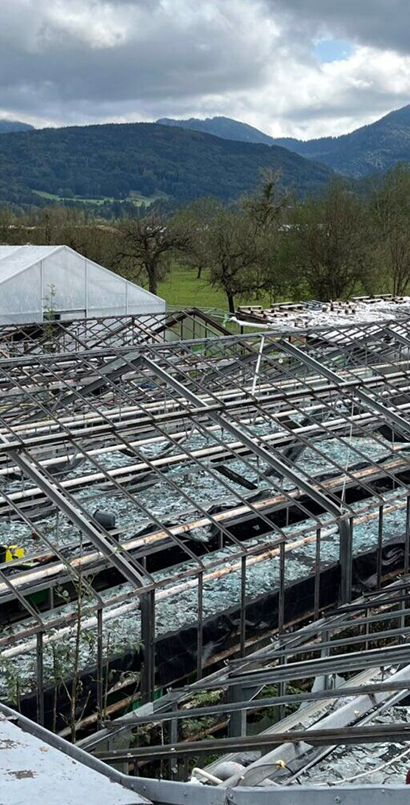
Other possible risks of storms.
According to our experts, there are also other factors that play a role.
Storm damage to the structure
Strong gusts of wind can destabilize the structure of the greenhouse and cause damage to roofs and walls.
Broken glass or plastic panels
Hail or objects flying around can damage glass panes, leading to water ingress and further damage.
Flooding due to heavy rain
Prolonged rainfall can lead to flooding, especially if the drainage system is inadequate.
Power outages during the storm
Storms can damage power lines and lead to outages, which will affect temperature regulation in the greenhouse.
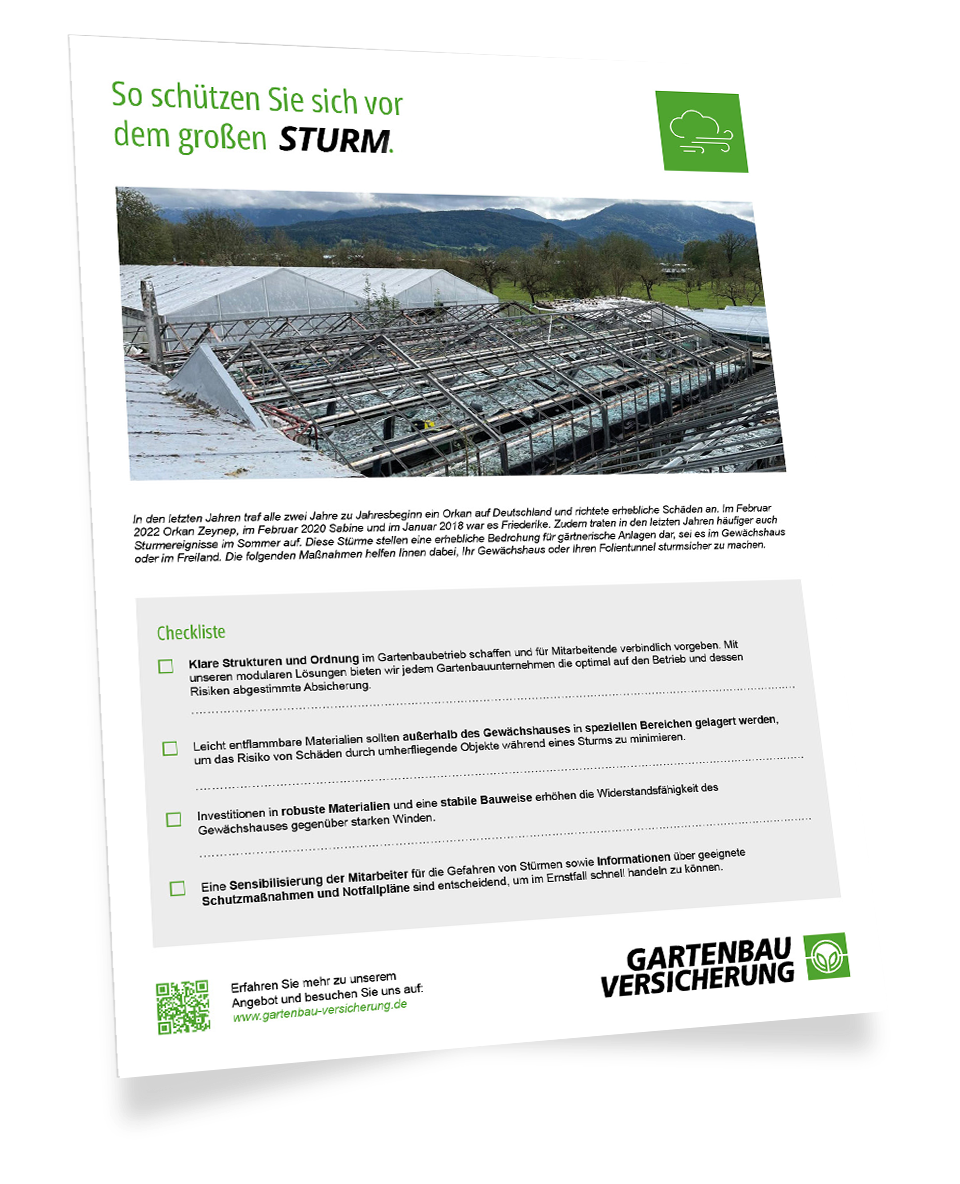
Kostenlose Checkliste herunterladen
Jetzt herunterladen und Ihr Unternehmen bestens absichern!
Your contact person is looking forward to hearing from you.
Our regional team of experts will be happy to help you.
You would like to report loss or damages?
Contact your risk advisor or submit a claim using our online form. Once we have received the notification of your claim, we will process it and contact you as quickly as possible.
Submit a damage reportIn the event of a claim, we are here to help.
Fast and unbureaucratic.
In the event of a claim, you need your insurance company to process your claim swiftly and unbureaucratically and provide immediate assistance.
Three things our members can count on:
Personal assistance provided by a direct contact person.
Initial damage assessment within 48 hours.
Unbureaucratic immediate assistance, e.g. liquidity within 7 days.
